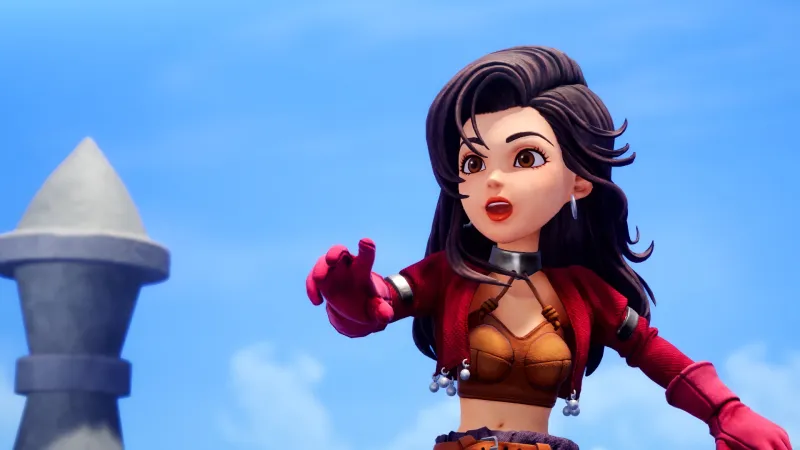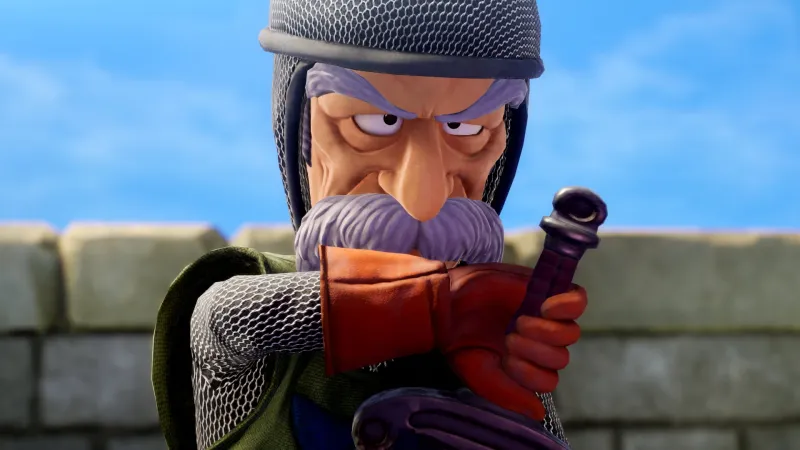Reading List
The most recent articles from a list of feeds I subscribe to.
How The New Voice Over Affected Dragon Quest VII Reimagined

Dragon Quest VII Reimagined is the first version of Dragon Quest VII to feature in-game voice acting, meaning characters like Sir Mervyn, Aishe, Maribel, Prince Kiefer, and even Ruff, will be voiced. Neither the original PlayStation release of Dragon Quest VII nor the 2016 3DS remake featured voice acting, so I asked Reimagined lead scenario writer if this changed how the team approached redesigning the story.
Unsurprisingly, it did.
"Knowing that it was going to have voice over certainly did change the approach of the way I wrote the narrative here," Sayaka Takagi tells me within Square Enix's Shibuya offices in Tokyo, Japan. “The original release on PlayStation didn’t have any voiceovers, and it was written [out]. So certainly, the way we wrote the language of the dialogue [in Reimagined] needed to be changed to be more realistic and more modern for modern audiences.”

She says colloquialism played a significant factor in writing Reimagined’s dialogue, because everything needs to sound natural for the various included voice-over options.
I hear first-hand one of these changes when I encounter eventual party member Sir Mervyn at the top of The Tallest Tower dungeon while playing the game. After I awaken him from a special stone to defeat the flying Chimaera surrounding the tower, he does just that before gracefully landing beside my party. It's here I hear his voice, and it sounds like that of a medieval knight – this isn't too shocking, considering how he looks.
 Sir Mervyn
Sir Mervyn
But in Japanese, he talks like a feudal samurai, Reimagined producer Takeshi Ichikawa, who you can read more about here, says. Another example of this colloquialist effect present in Reimagined comes from Bulgio, an extremely wealthy man who gives Hero the special stone that houses Sir Mervyn. In English, Bulgio mixes Italian words into his English, reflecting the multicultural inspiration present throughout the world of Reimagined. In Japanese, however, that's not the case – instead of mixing English and Italian, his dialogue instead reflects his character rather than a nationality.
"He's supposed to be this rich, arrogant guy, and that's reflected in the dialogue," Takagi says on the differences between the Japanese localization and the English version, noting her work is focused on the former while other teams handle the latter. "At least for the Japanese version, we didn't necessarily write dialogue in a way that you can tell what these specific cultural backgrounds are for each character, but we did write dialogue in a way that it's immediately understandable what kind of personality that character has."
Takagi adds, "The world of Dragon Quest VII, as you know, is comprised of many different islands, and obviously the dialects on each of those islands tends to differ, so it is a very important part of the story of Dragon Quest VII to ensure that the residents of those islands can reflect the uniqueness and individuality of each of those islands and the cultures they have."
We'll get to hear more of these new voices when Dragon Quest VII Reimagined launches on PlayStation 5, Xbox Series X/S, Switch 2, Switch, and PC on February 5, 2026.
In the meantime, check out this article breaking down everything in the Dragon Quest VII Reimagined issue of Game Informer, and be sure to subscribe here if you haven't yet so you can access the Dragon Quest VII Reimagined cover story, our deep dive into Dragon Quest history with creator Yuji Horii, and so much more. Here are some other stories to check out:
- Dragon Quest VII Reimagined Will Have A New Never-Before-Seen Conclusion
- Who Is Takeshi Ichikawa, The Producer Of Dragon Quest VII Reimagined?
- Here's How The Dragon Quest VII Reimagined Team Streamlined Its Main Scenario
Whose voice are you most excited to hear in Dragon Quest VII Reimagined? Let us know in the comments below!
Watch a Queen in Arc Raiders die with a single hit
Disney Plus will release a Death Stranding anime in 2027
Your future Steam Machine can also look like a Portal Companion Cube
Metroid Prime 4: Beyond Preview - Metroid Prime 4 With Mouse Controls Is Mind-Bendingly Good

Platform:
Switch
Publisher:
Nintendo
Developer:
Retro Studios
Release:
After eight long years, Metroid Prime 4: Beyond is nearing a real launch. I got the opportunity to both stand and sit down to play some of it on the Switch 2, and it feels like it hasn't missed a step in the interim.
My first playable section was a run back through the opening of Metroid Prime 4: Beyond, shown off in last year's Nintendo Direct; intergalactic bounty hunter Samus Aran arrives at a research station under attack from space pirates, and leaps off the top of her ship to assist.
After working my way through tutorials and several dozen space pirates, I eventually hit the cutscene introducing Sylux, the Metroid Prime Hunters baddie who's taking a more central role. He's important, it seems, but this is the only portion of the demo where I see much mention of him, the space pirates, or the Metroids that strangely follow his commands.
I'm guessing Sylux plays a more significant role later, but after being taken to the next demo room, I'm dropped into the thick of it: Samus, sans powers, in the new world of Viewros. Well, not all powers. The bounty hunter will have to regain abilities like Missiles and Morph Ball bombs again, but the upside is a new suite of psychic abilities, enabled by a glowing purple gem in the center of her helmet.
For puzzle-solving, this means Samus can move specific orbs and other objects with her mind to open doors and access new areas. Her bounty hunting arsenal also gets a boost from the newfound powers, too; Samus' Psychic Morph Ball bombs can be picked up and moved around before they detonate, and her Control Beam can be piloted through the air to its target.
The Control Beam is applied to both puzzles and combat as I dive deeper into the jungle zone. Shooting a Charge Shot through an opening and around to the backside of a door to open it is rewarding to pull off. A later boss fight, against a plant monster with whip-like limbs, requires me to break the shields guarding its appendages and then curve a Control Beam around the arena (like in the 2008 film, Wanted) taking out every weak spot in one go. The suite of psychic powers already seems like a standout for Metroid Prime 4: Beyond.
I tried out all the control schemes I could to get a sense of the best way to play: attached Joy-cons, a Pro controller, and the controller-plus-mouse mode. The mouse controls genuinely surprised me. There are many situations where Samus might want to lock onto an enemy but then pinpoint specific parts around its body, or even doors that had me lock on, then hit several corner areas while staying locked on the center. Mouse controls felt perfect in those moments, allowing for quick and precise targeting while on the move. I still prefer the Pro controller for general ergonomic reasons, but with a good mat, the Joy-Con mouse felt less like a novelty and more like a genuinely viable alternative control scheme.
About halfway through my venture through the Fury Green area, Samus stumbles upon a Federation fighter who's also stranded on this strange new planet. After rescuing him, he reveals he's an engineer, and starts following Samus. This companion character dynamic is interesting; for gameplay reasons, it means you have a helping hand in some combat sections, though you'll also need to keep an eye on your new friend and protect him when things get dicey.
Narratively, the engineer helps push the area progression forward by interfacing with the strange tech left behind by the Lamorn, a long-lost alien race that seems tied to everything happening on Viewros. He also provides a bit of comedic relief counter to Samus' silent, stoic stature. The dynamic is enjoyable, but I do hope it's used sparingly.
The lush foliage surrounding my starting area is spectacular. Playing Metroid Prime 4: Beyond in either handheld and docked modes look great, but the colors popped just a little more when lit up on a big screen. I looked for fault, and only saw a few stutters here and there, but never near enough to drag the experience down. The strange, dangerous flora and fauna build an incredible atmosphere. The soundtrack is excellent too, with all the musical stings and eerie ambiance you'd want from this sci-fi adventure.
Metroid Prime 4: Beyond has been an entire console generation in the making, which makes for a tough bar to clear. After spending time exploring the world of Viewros, though, Metroid Prime 4 is poised to be an exciting adventure for Nintendo's intergalactic bounty hunter. Samus' mind is expanding, but it's still the shot-charging, ball-rolling, back-tracking adventure you'd hope for in a new Metroid Prime.







